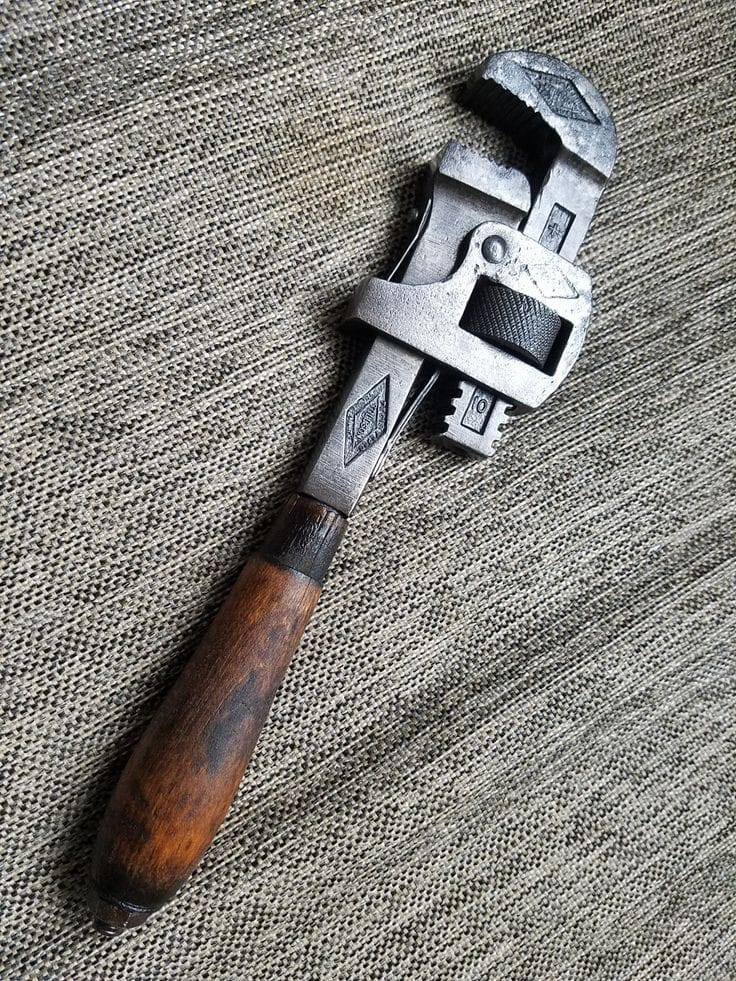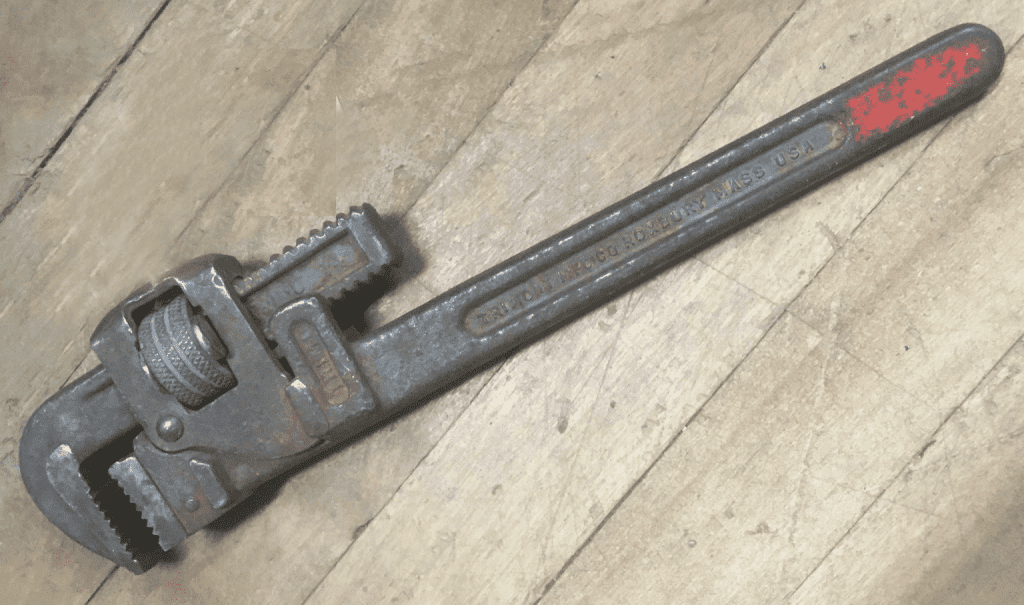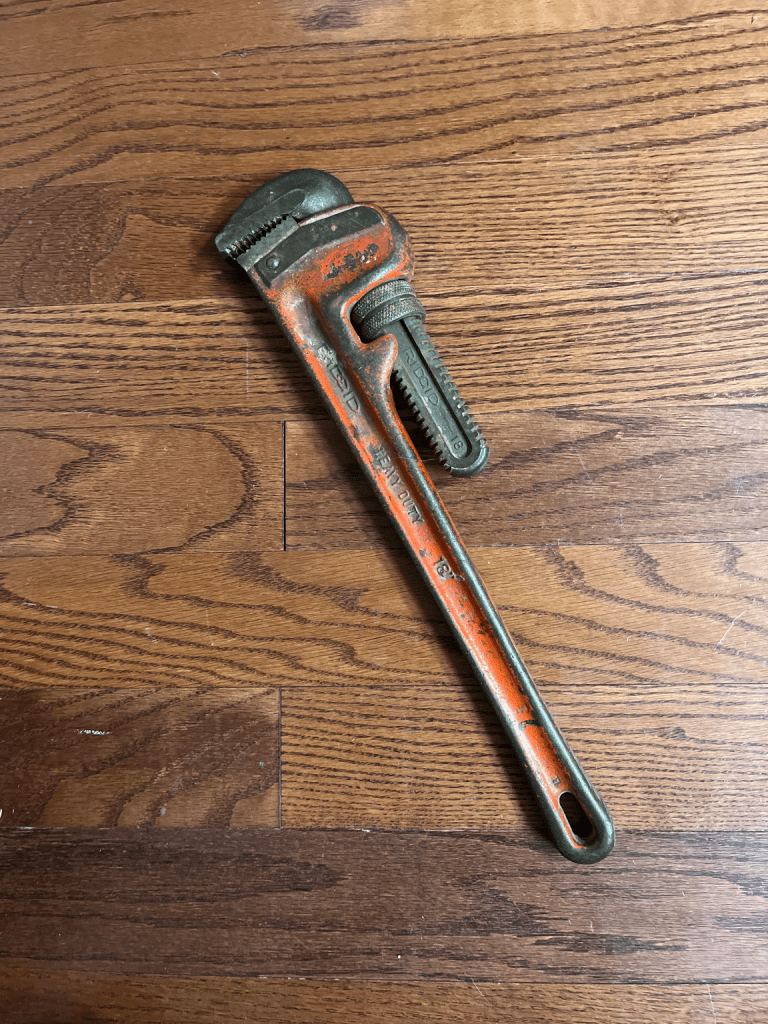The pipe wrench is a staple in any plumber’s toolkit and a crucial part of the mechanical piping trade. We may use it frequently, but how often do we stop to think about its origins? This adjustable tool, designed specifically for gripping circular objects like pipes, has an interesting history. Let’s take a journey through the evolution of the pipe wrench and discover how it became the reliable tool we know today.

The Origins of the Pipe Wrench
The story of the pipe wrench begins with Daniel C. Stillson, a mechanic at the Walworth Company in Cambridge, Massachusetts. In the mid-19th century, as iron and steel piping began to be widely used for steam and gas distribution, the need for a specialized tool became apparent. Existing tools weren’t up to the task of handling pipes effectively, and Stillson saw an opportunity.
On October 12, 1869, Stillson was granted U.S. Patent #95,774 for his invention of the pipe wrench. His innovative design featured a toothed lower jaw and a moveable upper jaw, known as the “hook jaw.” This setup allowed the jaws to clamp firmly onto a pipe when pressure was applied to the handle. Remarkably, the basic design Stillson introduced has remained virtually unchanged for over 150 years, a testament to the effectiveness of his invention.
How the Pipe Wrench Works
The genius of the pipe wrench lies in its simplicity and functionality. It consists of a metal handle with two jaws: a fixed lower jaw and a movable hook jaw. The hook jaw can be adjusted by turning a circular nut, allowing the wrench to accommodate different pipe sizes. Once adjusted, the hook jaw has a slight rocking motion. When force is applied to the handle, the jaws pivot and create a powerful grip on the pipe, allowing the user to apply significant torque without slipping.
Proper positioning of the wrench on the pipe is essential. Ideally, there should be a ½-inch gap between the back of the hook jaw and the pipe, which allows the jaws to pivot and increase their grip as pressure is applied. If the hook jaw makes contact with the pipe, it diminishes the wrench’s effectiveness, potentially leading to slippage and a weaker hold.
The Pipe Wrench in the Early 20th Century
As gas, steam, and water lines expanded in the early 20th century, the demand for reliable pipe fittings grew. These pipes needed to be threaded on both ends and screwed into connections that had to be leak-proof, requiring a tool that could generate substantial torque. The Stillson wrench was the perfect solution. Its natural wedging action allowed plumbers to apply the necessary force to ensure leak-proof connections, making it an essential tool for industrial applications and home plumbing alike.
With the advent of mass production in the 1920s, the pipe wrench became more accessible and affordable, cementing its place in the trades. Its design was strong enough to handle the rugged iron pipes commonly used in gas, water, and steam distribution systems, and it quickly became a staple tool.

Types of Pipe Wrenches and Their Uses
Today, there are various types of pipe wrenches, each suited for specific tasks. Here’s a look at the six main categories:
1. Straight Pipe Wrench
This is the classic design and the most commonly used type of pipe wrench. It features a straight handle and is available in sizes ranging from 6 inches to 60 inches. Suitable for most general plumbing tasks, the straight pipe wrench is versatile and reliable.
2. End Pipe Wrench
An end pipe wrench has a design similar to the straight wrench but with angled jaws, making it ideal for working in tight spaces or close to walls. Its unique jaw placement provides better access in restricted areas, which can be invaluable when working on pipes in confined environments.
3. Offset Pipe Wrench
The offset pipe wrench offers a wider jaw opening and angled handle, making it perfect for jobs requiring additional leverage. This design is particularly useful for gripping pipes at awkward angles or for working on larger-diameter pipes, where extra force may be needed.
4. Compound Leverage Wrench
When maximum torque is needed, the compound leverage wrench delivers. It has a special mechanism that multiplies the applied force, making it ideal for loosening stubborn, rusted, or corroded pipes. The added leverage makes it easier to break free stuck fittings that a standard pipe wrench might struggle with.
5. Strap Wrench
For more delicate tasks, the strap wrench is an excellent choice. It doesn’t have traditional jaws; instead, it uses a strong, flexible strap to wrap around pipes or other circular objects. This design prevents scratching or damaging surfaces, making it ideal for working with softer materials like PVC or polished metal.
6. Chain Pipe Wrench
A chain pipe wrench features a chain instead of a fixed jaw. The chain wraps around the pipe and is locked into place, allowing for a secure grip on large-diameter pipes or odd-shaped objects. It’s particularly effective for jobs where other wrenches might be too cumbersome or where a more flexible grip is needed.
Beyond Stillson: The Evolution of Pipe Wrenches
While the original Stillson wrench remains a standard, many manufacturers have developed new variations and materials. Modern pipe wrenches can be made from iron, aluminum, or even stainless steel to reduce weight and increase durability. The choice of material often depends on the specific application and the user’s preference, with lightweight aluminum wrenches gaining popularity for their ease of handling.

In addition to material advancements, some wrenches now feature ergonomic designs or padded handles for improved comfort, especially during extended use. Although Stillson’s basic concept remains the foundation, these innovations cater to modern demands for efficiency and ease of use.
The Pipe Wrench’s Lasting Legacy
More than 150 years after its invention, the pipe wrench remains an indispensable tool. Its durability, simple design, and effectiveness have made it a fixture in plumbing and other trades. Whether working with metal pipes in industrial settings or handling plastic piping in residential applications, the pipe wrench’s versatility ensures its continued relevance.
It has also become a symbol of manual labor, embodying the spirit of hard work and ingenuity. The pipe wrench reminds us that some tools, though simple, are so effective that they withstand the test of time.
Conclusion
The history of the pipe wrench is a testament to practical innovation. Daniel Stillson’s invention solved a problem that allowed plumbers and tradespeople to work more efficiently, and his design has proven remarkably resilient over the years. From straight to offset and chain wrenches, these tools have evolved to meet various needs while maintaining their fundamental purpose: gripping, holding, and turning pipes. As long as pipes exist, the humble pipe wrench will remain a trusted companion, firmly securing its place in the toolkit of professionals and DIY enthusiasts alike.


